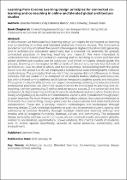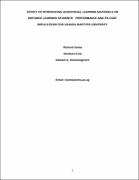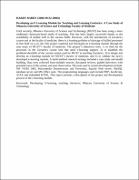| dc.description.abstract | In this chapter we formulate four learning design principles for connected co-learning and co-teaching in online and blended global architecture studios. The Coronavirus pandemic not only amplified the current challenges in Higher Education (HE) generally, and in architectural education specifically, but it revealed the potential for globally connected practices in learning, teaching and research. We were interested to understand how future connected co-learning and co-teaching in online and blended global architecture studios can be designed and which principles should guide the process. Drawing on the respective HE contexts of the authors, namely four Schools of Architecture—two situated in Africa, and two in Australia, representing both the global South and the global North, we employed a collaborative auto ethnographic research methodology. The principles that we identified recognise distinct differences in these contexts, that are visible in the composition of student bodies, staffing and resources, but with a shared aim to address social justice, inequality, student access and inclusion. Through an in-depth reflection on our respective learning contexts, and educational and professional practices, we identified seven themes for connected co-learning and co-teaching, namely connecting: 1) online and on-ground spaces, 2) the university and the profession, 3) digital learning and teaching tools, 4) students and educators, 5) educators locally and globally, 6) students and international experts, and 7) students through peer-to-peer learning. For each theme we derived five observations, that were synthesised to formulate four overarching design principles for cross-cultural and inter-institutional collaboration. These are: 1) employ relevant technologies and techniques through learning design; 2) acknowledge students-as-partners to promote student agency and well-being 3) consider flexibility through multiple interlinked learning settings and modes; and 4) recognise humanity, humour, culture, and community. The proposed design principles address current critiques on architectural studio education globally, related to socialisation, asymmetrical power relations, the mental health of students, and, in online spaces specifically, aspects of social presence, authenticity and embodiment. | en_US |





